#Hoplophoneus primaevus
Text
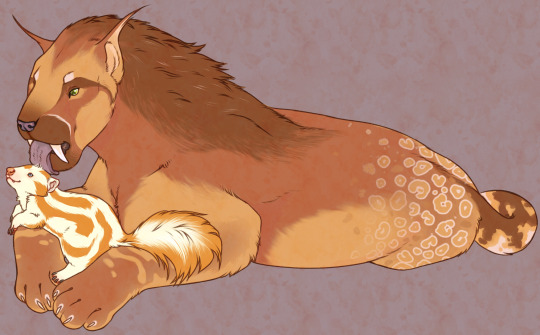
hoplophoneus primaevus and spilogale gracilis for my fiance and bestie
21 notes
·
View notes
Photo
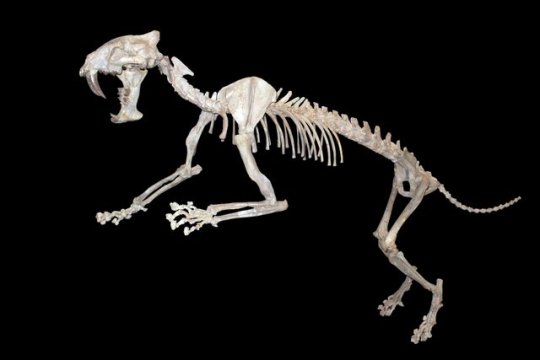
Skeleton of Hoplophoneus primaevus.
125 notes
·
View notes
Photo
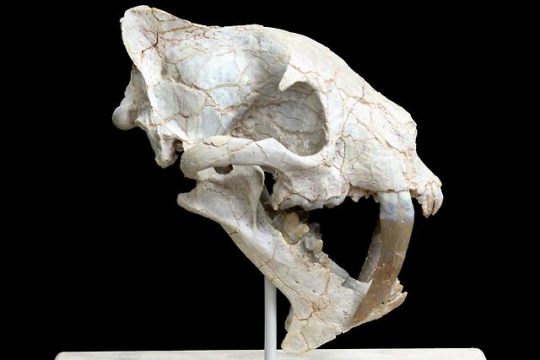
7" False Saber-Tooth Cat (Hoplophoneus) Skull - South Dakota
This is very rare find from the White River Formation of South Dakota, a complete skull of a "false saber-tooth cat" (Hoplophoneus primaevus). The skull measures only 7" in length, comes with a custom stand for display and has only some minimal restoration done to it.
Restoration is less than 5% and includes most of the zygomatic arch on one side, and part of the zygomatic arch on the other. Two of the small teeth at the very front of the skull and a few small crack fills.
Although resembling a big cat, Hoplophoneus was actually one of the nimravids, more popularly known as the ‘false sabre-toothed cats’. Like Smilodon which proceeded it they had very enlarged, sabre-like canine teeth in the upper jaw.
More info at: https://www.fossilera.com/fossils/7-false-saber-tooth-cat-hoplophoneus-skull-south-dakota
76 notes
·
View notes
Video
instagram
palaeoart Another incredible specimen on display at the University of Zurich Museum of Palaeontology. This is the fully reconstructed skeleton of Hoplophoneus primaevus - a 30 million year old Sabre-toothed Nimravid from the Badlands of South Dakota and Wyoming. Hoplophoneus is easily differentiated from other Nimravids (like Dinictis) by two lower bone flanges growing underneath the lower jaw which gave extra support to the extra long sabres when the beast had its mouth closed.
#zurich#museum#geology#fossil#sabre-tooth#nimravid#video#fossilfriday#bone#the earth story#instagram#paleontology
199 notes
·
View notes
Photo
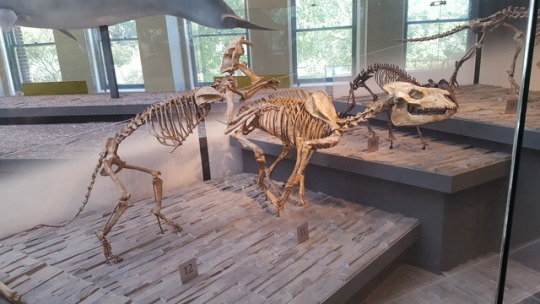
Hoplophoneus primaevus (left) attacking Hyracodon nebraskensis (right) at NHMLA. H. primaevus was a leopard sized Nimravid, a family commonly known as the false saber toothed cats, as they were neither all that close to true saber toothed cats, nor were they true cats. However, they were built similarly to cats, and filled a cat-like niche in late Eocene to the early Oligocene North America. H. nebraskensis lived alongside H. primaevus. It was a small, lightly built rhinoceros, and lived similarly to primitive horses rather than to modern rhinos. Despite its small size, it was actually very closely related to the largest known land mammal to have lived; Paraceratherium, which was another Hyracodontid (hornless rhinoceroses).
103 notes
·
View notes
Photo
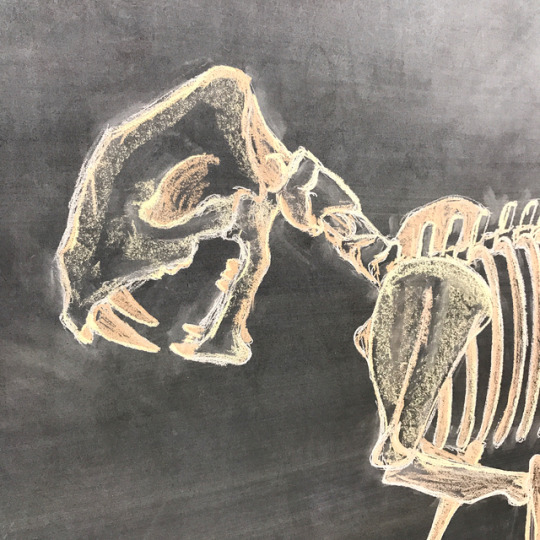
For a #FossilFriday and #FridayThe13th combo, geology collections assistant Adrienne Stroup illustrated the fierce saber-toothed Hoplophoneus primaevus. Though it looks cat-like, this carnivore is a nimravid—unlike the saber-toothed cat Smilodon, which is a felid. Hoplophoneus lived during the Late Eocene to Early Oligocene, 35-29 million years ago. Based on its body type, we can tell that it was likely an ambush predator. Watch the full illustration at http://bit.ly/FossilFriday13 (link in profile ☝️). #fossils #FieldMuseum #collections #NaturalHistory #science #SciArt http://ift.tt/2z6fokm
0 notes